I often hear people complain that photographers with digital cameras tend to overshoot their subjects. While that might be true if you’re taking fifty image of the same subject without changing anything, I’ve always been one to make a lot of photographs, and make them often.
If you’ve seen my instagram feed, then you know that I enjoy posting triptychs – and for good reason. Posting more than one image forces me to explore my subject (rather than simply capturing the first “grab-shot” and walking away), while the constraint of posting three related images, limits the possibilities yet somehow, simultaneously increases my creativity.
Some days I choose a specific subject like the corner of the convention center or the sunflowers in the images below and change my perspective to create three unique images of that subject.
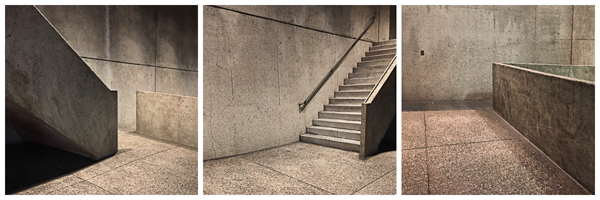
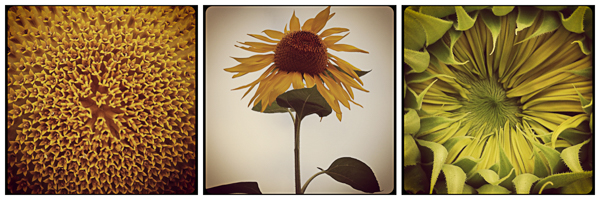
Other times, I choose a theme, concept, or word and then make images based on that idea. In the images below I chose “texture” and “architecture”. My goals is to make the images work well together so I look for visual similarities such as quality and direction of light, color, and tone.

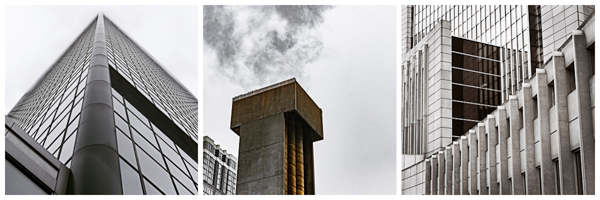
I also look for graphic shapes or lines. In the first set of examples below, the “parking” theme as well as my angle of view helps tie the images together whereas the strong lines and reflections in the buildings help tie the second set together.
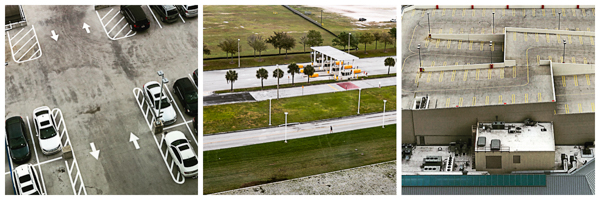
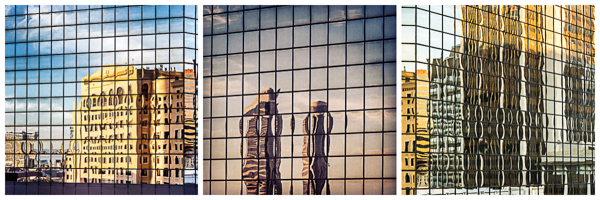
I often use techniques such as long exposures/slow shutter speeds with the camera on a tripod or panning the camera while in a moving car to explore what is invisible to the naked eye.
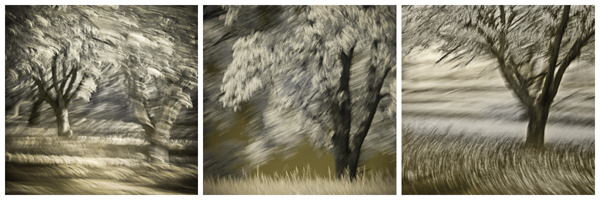
I find photographing through an object (the window of a plane or a car for example), is another interesting way to create a relationship between images that might otherwise be of differing subject matter.
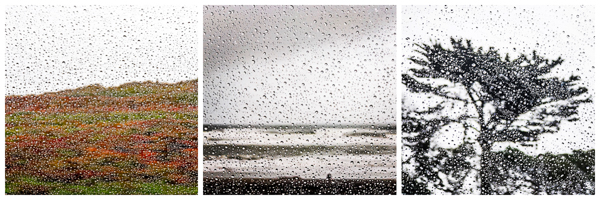
And, knowing what’s possible when processing images in Lightroom and Photoshop can also help unify a series of images. Processing the photographs of the wires below as high-key, black and white images enabled me to match the sky across the images while refining white balance helped strengthen the color palette across the aerial images.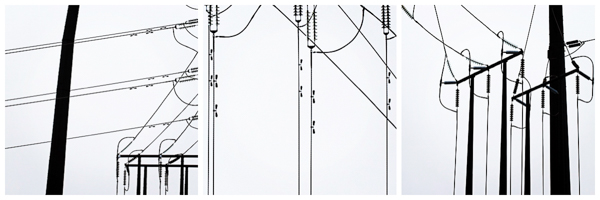
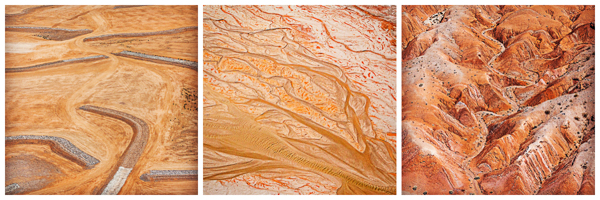
So while it’s true that it might take more time to edit the larger number of photographs that I make, the freedom to explore the subject and increase my skills (at such little cost), is just too good of an opportunity to pass up. I can almost guaranty that without making a lot of images (and making them often), I would never have seen – nor made – the last image of the Golden Gate Bridge below.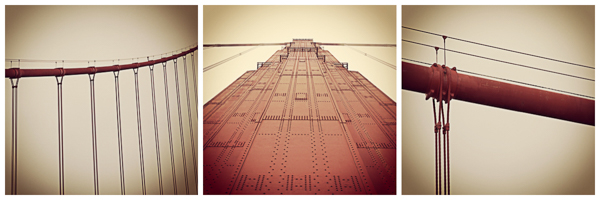
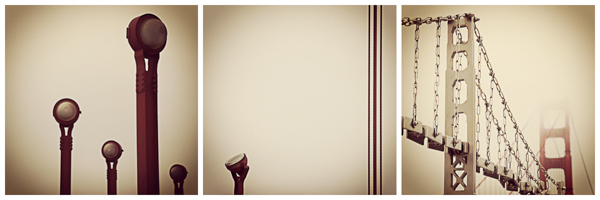
Have a great weekend!
And, for some things, as here; the bridge, the rocks, the flower, the buildings – the three images together really tell the story, or convey the truth of the object in some mysterious or magical way “What I tell you three times is true” (Lewis Carroll). Less than three images don’t work as a symphony. Two images can really only point up a contrast. Four and five images are too many to comprehend in one take. Odd numbers of objects always look better as a group, plants in a garden, potatoes on a plate. I wonder why? Weird how our minds work.
Julianne, as usual I thank you. What camera setting do you use for shooting out of a car window?
Unfortunately it depends on the speed of the car, the speed of the pan, the distance to the subject etc, but I try to set it somewhere around 1/30 of a second while keeping my aperture near f11. You might need to change ISO or add a neutral density filter on a bright day.
Key point, even if not stated: self assignments will make you shoot and shoot more. Shooting more opens the door to more interesting composition(s) and more usable images now and later. Thanks.
Julianne, Always an inspiration. Thanks for sharing this concept. Consider it taken as a new challenge for me. Cheers, Bob
One of the best blogs I’ve seen in a long time. So practical, Julianne. I sense this will be a creative day in my backyard 🙂
Wonderful way to explore a subject more thoroughly and see the possibilities that often lie in subjects that we tend to ignore. Thanks so much for the inspiration!
Wonderful, thought provoking, post Julieanne. I am often times guilty of moving too quickly from a scene without properly exploring the possibilities.
Digital provides us with the opportunity to take lots of images. And I do just that. The one upside of that admonition to me is, it’s important for me to slow down and really explore a scene from every angle. Taking lots of images may cause us to start shooting too quickly. One of the major advantages of a tripod, or even a monopod, is that they slow us down.